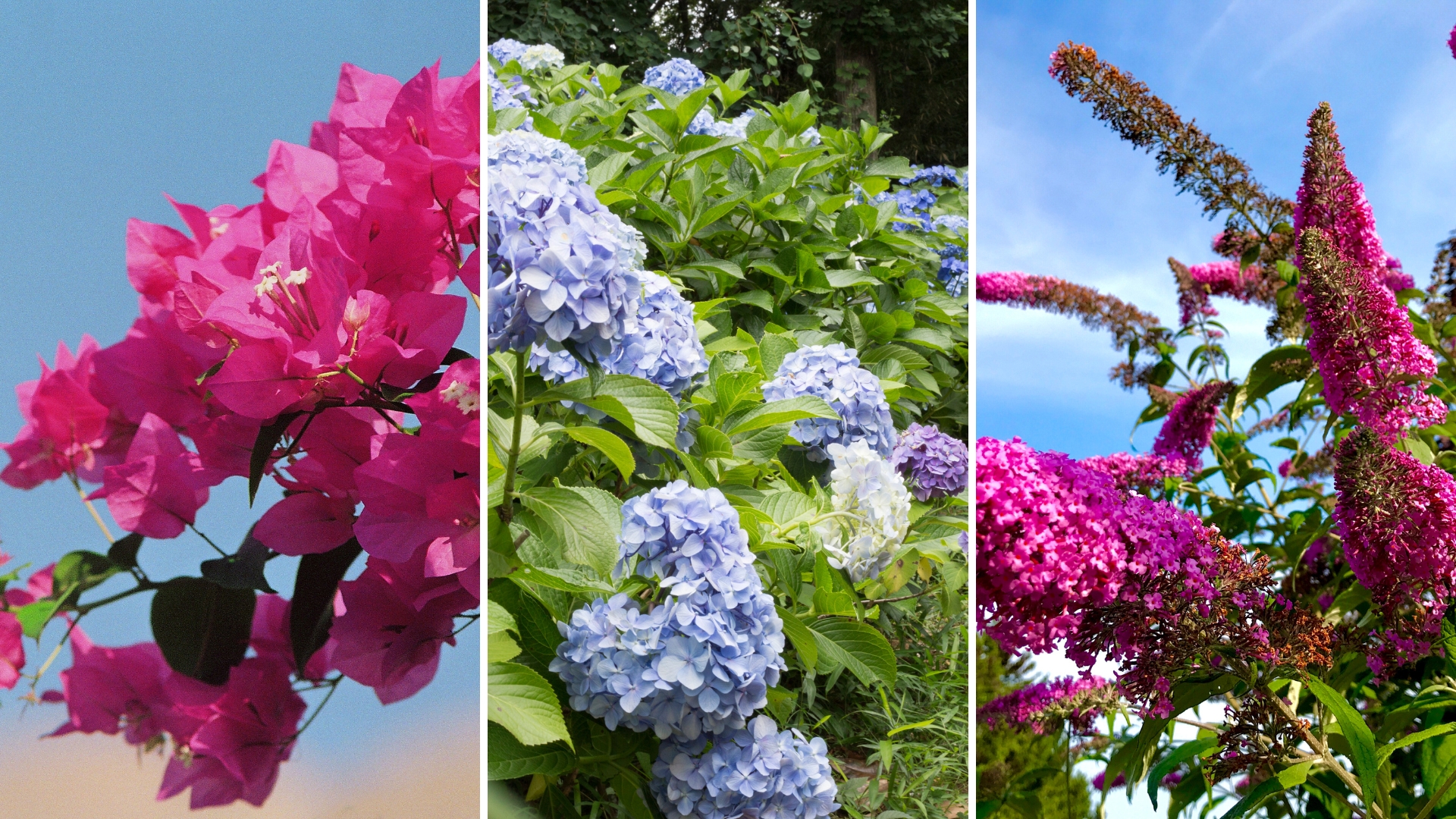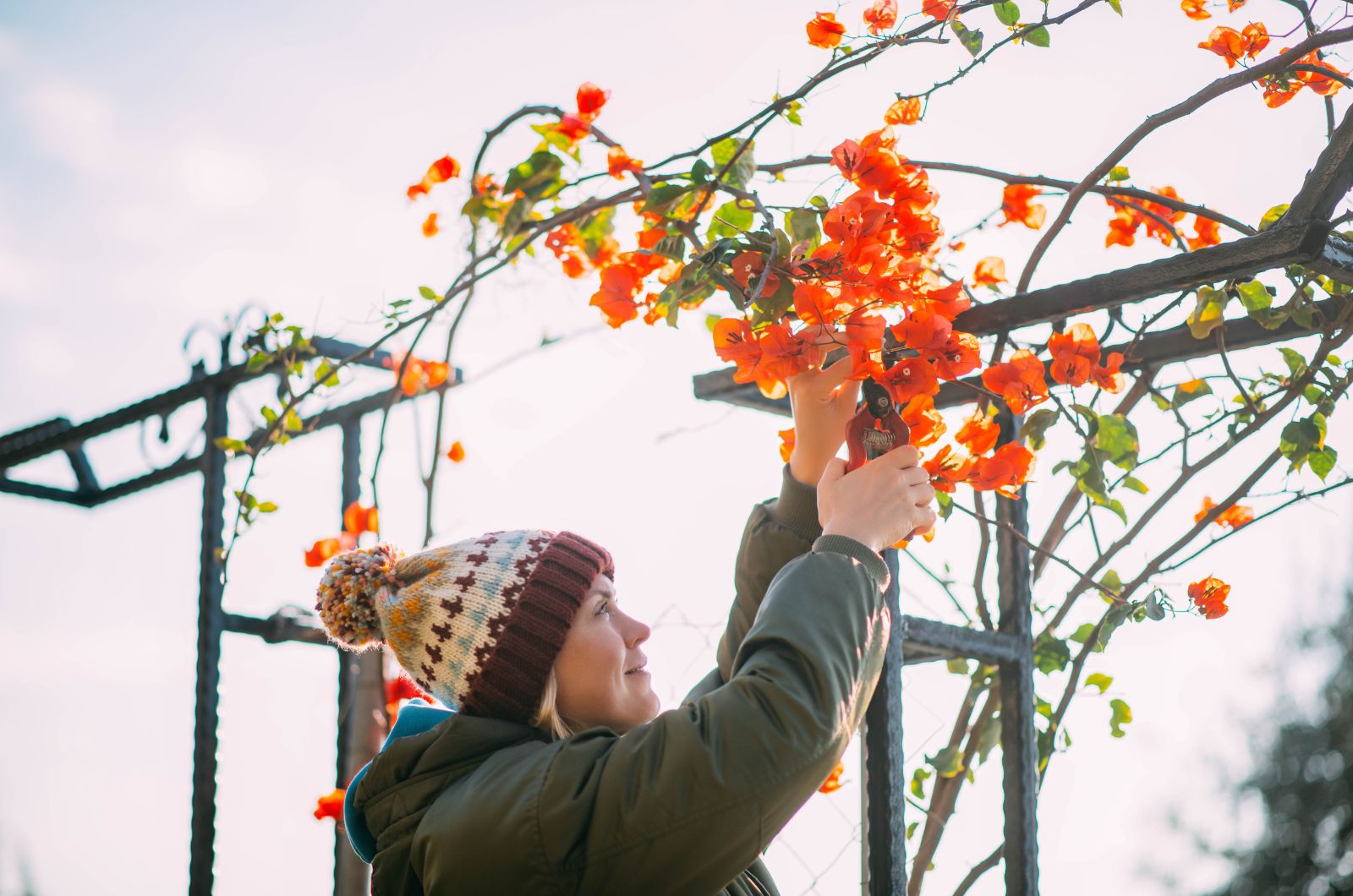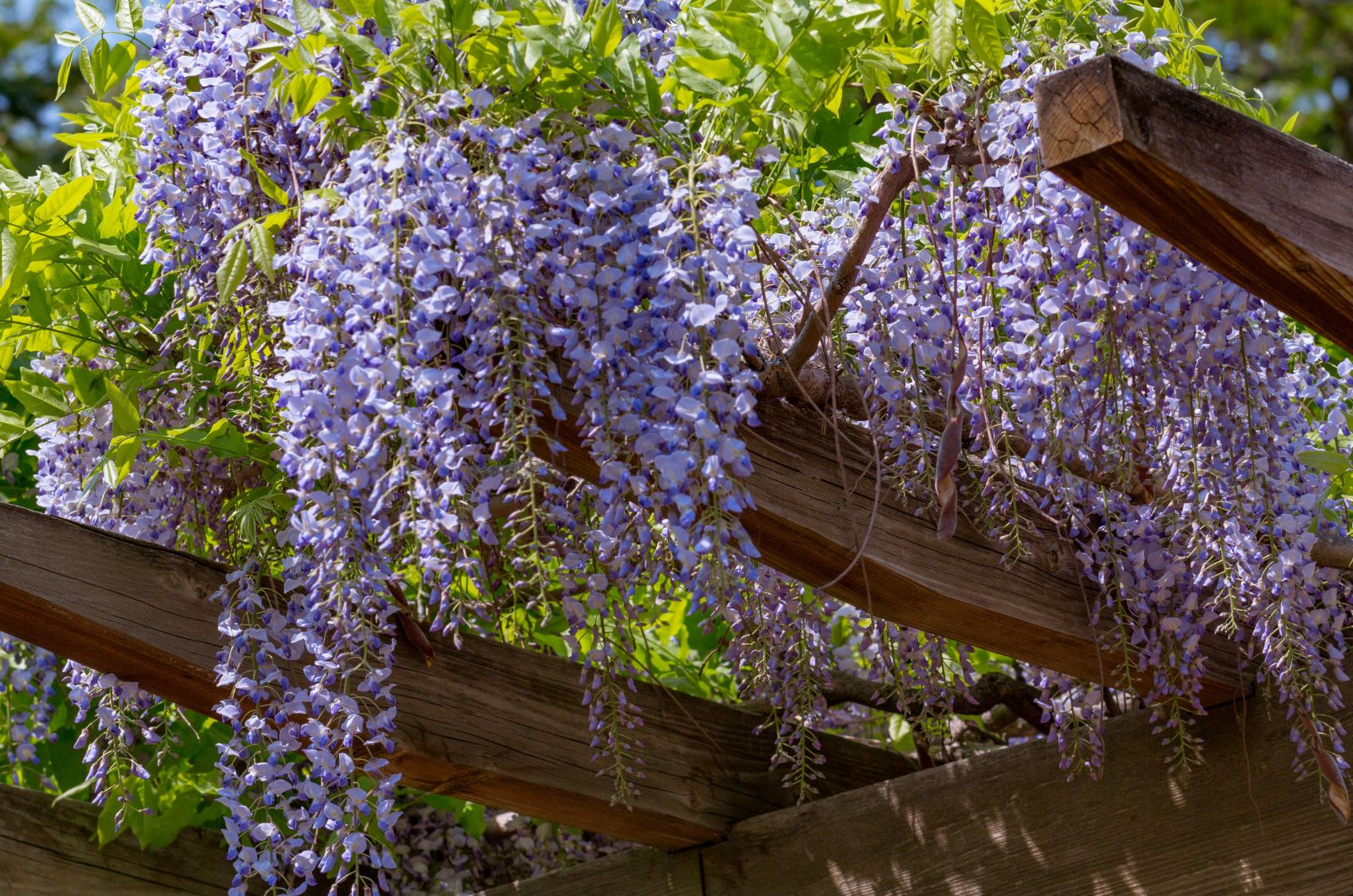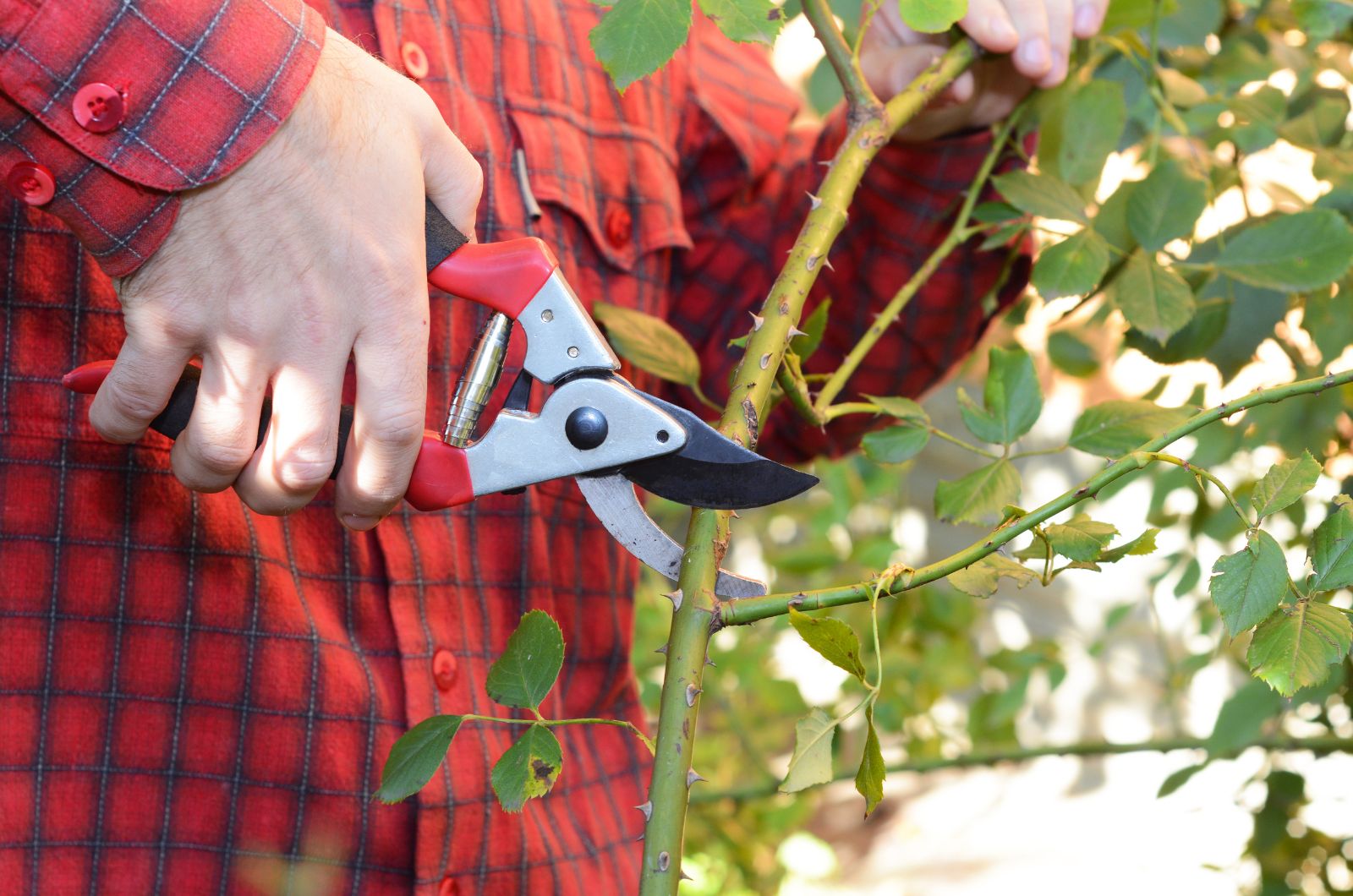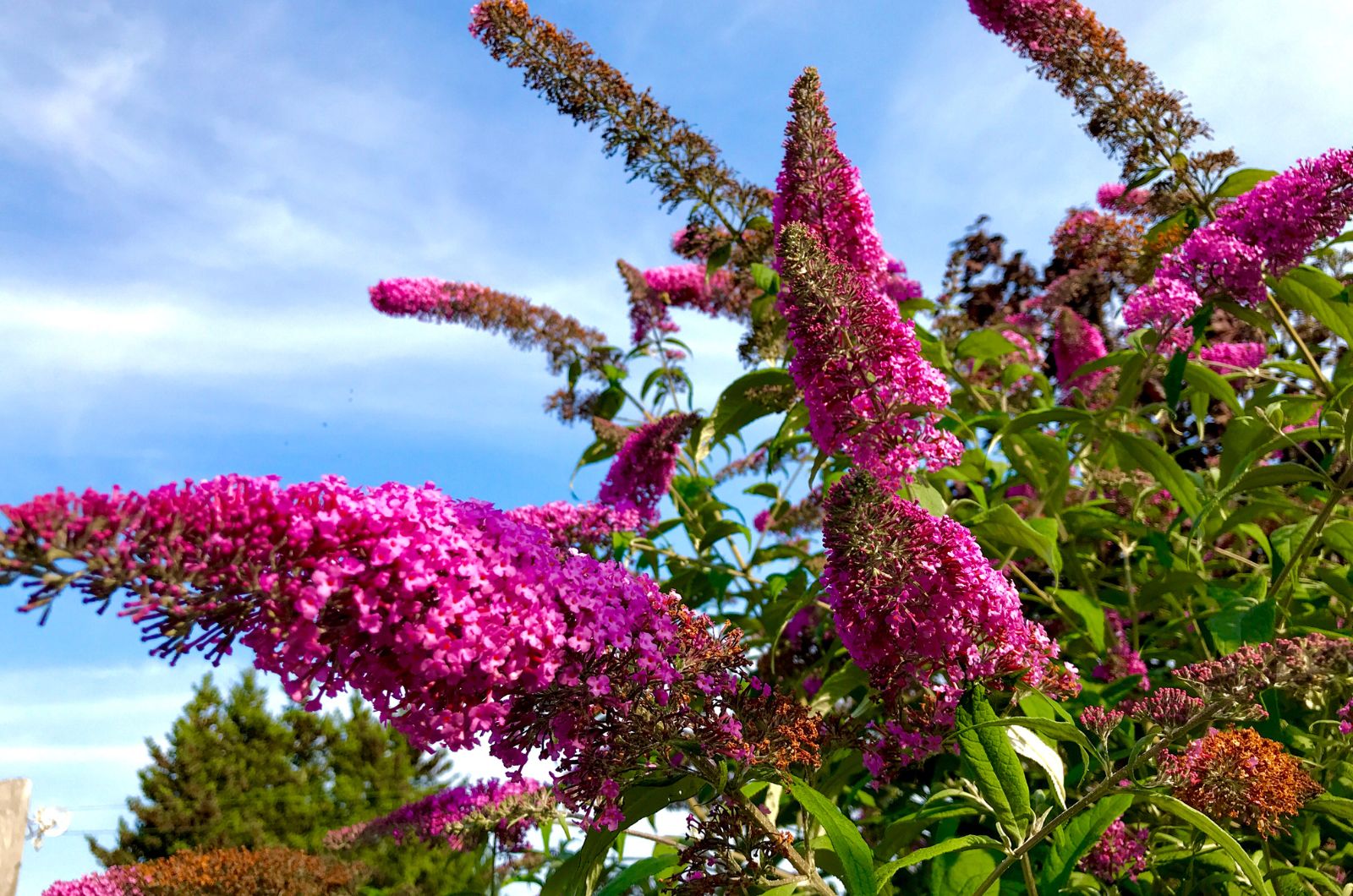Spring is almost here and, for gardeners, that means a lot of chores. Well, that’s not so bad because we’ve been waiting all winter for this moment.
One of the most important tasks in this period is pruning, and our main goal is to promote airflow within the plant and enhance flower production.
If you grow flowering shrubs, this isn’t a job you want to skip. Pruning will help these gorgeous plants reach their full potential.
In this article, I’ll show you a few flowering shrubs to prune in February for the healthiest growth and an abundance of blossoms.
Let’s get started!
1. Bougainvillea
Bougainvillea is a true gem and its splendid colorful blossoms are incomparable. It has a trailing growth habit, so gardeners often attach it to trellises or other types of structural support to enhance its beauty.
Another great thing about Bougainvillea is that it has a fast growth rate, so you’ll be rewarded with a full plant and a lot of blossoms in a short period of time. But this means that you’ll need to do a lot of pruning in order to maintain the Bougainvillea’s shape.
The best method is to cut back the last season’s Bougainvillea growth by approximately two-thirds at the beginning of the spring.
Don’t worry, these are tough plants and they won’t mind heavy pruning. This is an excellent feature because maintaining plants on trellises can be tricky.
Since many cultivars have thorns, I highly recommend wearing gloves when handling your Bougainvillea.
For creating an open Bougainvillea shape, always opt for a clean and sharp pair of pruners when removing diseased, crossing, or weak stems.
You can rejuvenate aged plants by removing the older stems, with a focus on cutting back to younger side shoots near the Bougainvillea plant’s base.
This technique is commonly referred to as restorative pruning and its main purpose is to encourage more blooms.
2. Winter Jasmine
During this season, the vibrant yellow blossoms of winter jasmine are a popular choice for injecting a lively burst of color into the yard.
These fragrant shrubs will thrive if you prune them in February. If you skip pruning your winter jasmine, you’ll be faced with a lot of tangled stems and only a few blooms.
As soon as your winter jasmine finishes blooming, make sure to trim it. Even though these plants can withstand heavy pruning, the number of blooms will decrease the next season.
It’s better to opt for light pruning to maintain the shape and encourage flower production.
Well-maintained winter jasmines require a simple pruning approach, and that means the reduction of side shoots to a robust bud or a young shoot growing in the desired direction.
You should also trim the older stems at ground level every couple of years so that the heart of your winter jasmine receives more light and has better airflow.
3. Wisteria
No one can resist the colorful clusters of blossoms of wisteria plants. But if you want these plants to reach their full blooming potential, then you’ll need to do some trimming in August and February.
The main goal of summer pruning is to remove back shoots to enhance air circulation and provide the base of your wisteria with more light. This will result in a lot of new growth and flower development.
Your wisteria will produce less leafy growth and focus its energy on flower production.
As the plant goes dormant in February and sheds its leaves, it becomes easier for you to trim back the summer-pruned shoots to 2-3 buds.
Your wisteria will look clean and be ready to shine when the growing season begins. Another reason why we cut back the growth to buds is to prevent the leaves from hiding the lovely wisteria blooms.
If your shrub has become too large, consider restorative pruning as a solution, which involves the removal of older stems. You may also need to prune back wisteria branches to ground level.
Don’t worry if your wisteria takes some time to get back in shape because once you see an abundance of blooms, you’ll forget everything.
4. Hydrangea
Trimming hydrangeas isn’t a hard task, but you should know which variety you’re growing. Some varieties bloom on new growth and others bloom on old growth.
For instance, if you need to prune an Annabelle hydrangea, you need to do it in late winter or early spring before the plant sets new buds because this variety blooms on new growth.
A similar case is with the paniculata varieties because they also produce blossoms on new wood. To maximize blooming, consider pruning your hydrangeas in late winter or early spring to spur new growth.
When pruning these varieties, make sure to prune back to the framework of your hydrangea to allow the plant to generate new growth.
On the other hand, if you grow climbing varieties, you can prune them at this point but only for the purpose of size control.
February pruning isn’t an option for lacecap and mophead varieties because they generate blooms on old wood and the blossoms occur in spring. If you prune at this point, you’ll remove the buds, so there will be no blooms.
However, if there are any damaged or weak stems on your hydrangea, you can get rid of them in February because they won’t produce blooms at all.
5. Dogwood
The enchanting blossoms and colorful stems of dogwoods adorn gardens worldwide. Some varieties are early-spring bloomers while others set their flowers in winter or summer.
Since dogwoods enter dormancy in late winter, it would be best if you pruned it in February or March.
During this period, your dogwood will be leafless and pruning it will keep the stems compact and vibrant for the next winter.
It typically takes 3-4 years for a dogwood plant to mature and this is when you should start with spring pruning. If you want your dogwood to be nicely shaped, you should prune it down to almost ground level.
You can easily finish the task by using a clean and sharp pair of pruners; remember, the stems are thin and bendy, so they are easy to handle.
Some stems may be woodier and pruners won’t help, so use a small pruning saw to avoid damaging your dogwood.
To promote robust new stem growth, ensure that the stump of the dogwood bush is left with a smooth, clean finish.
6. Roses
Pruning is definitely a task you don’t want to skip when it comes to roses. While late winter or early spring pruning suits the majority of roses, it’s important to note that rambling roses have different requirements.
So, if you need to prune your drift roses, you can do it in February. Remember that your roses are still dormant in this period and trimming will encourage new growth.
If you grow any floribunda or hybrid tea varieties, you should give them a hard pruning every spring. Your goal is to remove damaged or weak stems first and then move on to the remaining rose stems until you get an open shape.
Growers with shrub roses should also give their plants a light pruning in late winter or early spring. If you notice any damaged, diseased, or crossing stems, make sure to cut them off as well as any other unsightly stems.
Pruning is an excellent and essential strategy for getting more rose flowers.
7. Clematis
Similarly to other flowering shrubs, clematis will benefit highly from yearly pruning. Skipping pruning a clematis will result in a lot of tangled stems and bare and bloomless wood.
When it comes to pruning clematis, be cautious about late winter or early spring pruning, as it may not be suitable for all varieties.
Varieties that bloom in early summer, such as The President and Jackmanii, will do best if pruned in February. They generate blooms on the previous year’s growth.
So, the goal is to maintain the framework of old wood and to encourage new shoots in order to get more blossoms.
As usual, start with removing the damaged, discolored, or weak clematis stems and then move to pruning the remaining stems until you get a healthy pair of buds. Be careful not to cut off any buds when trimming your clematis.
If you grow late-blooming clematis varieties, you should give them a heavy pruning in mid-February. Prune back the older stems to just above a robust leaf bud pair, which is approximately 12 inches above the ground level.
8. Butterfly Bush
The only way to keep your butterfly bush happy and healthy is to follow a correct pruning schedule.
This is one of the best plants for butterflies but, in order to reach their full potential, they need pruning to retain shape and vigor.
Most varieties will benefit from late winter/early spring trimming and you should aim to prune the branches down to the base. This method is commonly known as stooling and it focuses on getting a clump of short stems that will generate new shoots soon.
If you have a mature and overgrown butterfly bush, then a pair of pruners may not work for removing woody stems. In this case, a pruning saw is the best tool you can use.
There’s nothing prettier than a garden with flowering shrubs, but in order to get the most out of them, prune them in February!

